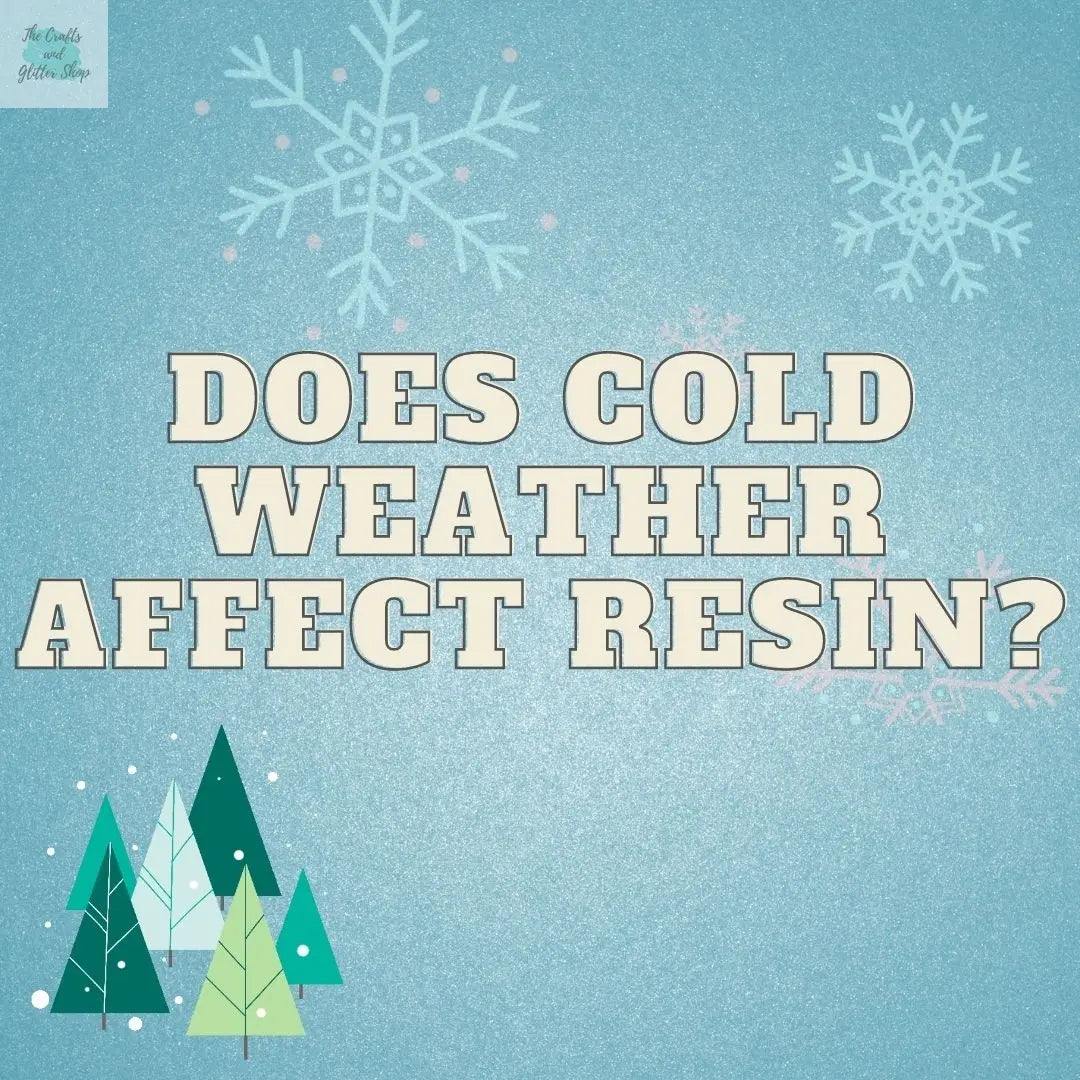
Does cold weather affect resin?
Share
The quick and short answer to your question is yes, cold weather does affect your resin.
When the resin is mixed with the hardener component, the curing process starts, during which the resin will start to generate heat which is crucial for the curing process. So when weather/room temperatures are low these will inhibit the resin from reaching the necessary temperatures to cure. When working in low temperatures the resin will end up being soft, bendy, sticky, or with imperfect surfaces
The ideal room temperature to work in when working with resin is 21-24°C / 69.8°F - 75.2°F. You may also need to consider the humidity level if you're using a resin type which is affected by humidity levels - see the tech sheet of the resin for information about this.
What can I do if my room temperature is lower than the ideal temperatures?
- Store your resin in a warm area or give the resin bottles a warm bath before you start working. If you're going for the warm bath, you need to do this before you measure your resin. Keep the bottles closed and do not submerge the bottles into the water. Dip the bottle into the warm water and keep the lids above water to avoid contaminating the resin with water. After the warm bath, dry the bottles well before opening them.
- Use a heating pad/mat or work in a room with controlled temperatures
- Create a small heated and temperature stable enclosed space to place the curing resin in
- Keep room temperature stable for at least the first 24 hours of curing
- If none of the above are possible options, place your resin to cure in the warmest spot of your work space to limit the issues that could happen when working in cold temperatures. Remember that resin is toxic - keep resin away from your kitchen/food area, kids and pets.
What happens if you work in cold temperatures?
Resin will take much longer to cure at cold temperatures - I find that it normally takes double the time to cure. The resin will be sticky for days, rather than hours. If the resin does not reach a solid stage within 4-7 days, the low temperatures might not be causing the problem.
At cold temperatures the resin will be very thick and so it will be very difficult to work with. Due to the gel like consistency that the resin can become, it will not be easy to mix the resin with the hardener. This adds the risk of not mixing the resin well. Additionally, when mixing the 2 parts, you will create a ton of air bubbles which you won't be able to remove even with a lighter/flame. Cold resin is difficult to spread and it will not self-level easily.
A possible solution to avoid these issues is to use a resin which has a water like consistency. These resins take long (2 days) to cure even at the ideal temperatures so you need to keep in mind that they will take even longer during cold temperatures. Even using such type of resin will have issues in cold temperatures. Since the resin takes longer than it should to cure to a solid stage, watermarks will form at the top layer - see image below.

The above imperfections can also result due to fluctuations of room temperature. As previously mentioned, keeping a stable temperature in the first 24 hours is critical. When the temperature fluctuates too much, the surface will be imperfect.
The size and/or depth of your cast is also a factor to consider when working in cold temperatures. If you are working in very thin layers or casting very small items (such as jewelry pieces), keep in mind that the resin will lose heat much quicker in these instances. For thin layers, the resin will lose heat too quickly and this might result in a sticky uncured layer or when it eventually cures it will be cloudy or have other imperfections. The same applies to small casts - the resin might not be able to retain the heat generated long enough for it to cure. Large casts or deep layers might work a bit better since the heat generated by the resin will not be lost as quick.
If working in a room with a controlled temperature is not a feasible option for you, try creating a small enclosure for your resin to cure in. Place a heating pad/mat inside and make sure to test out the best temperature to set the mat at. You want the enclosed area to retain heat inside but at the same time you don't want the temperature to rise too much since working in too warm temperatures will also cause issues. Remember that keeping a stable temperature is important, especially in the first 24 hours.
Do you have any other tips that you apply when working in cold weather? Share them with the community in the comment section below.
